In-store QR Ph
Learn how to create QR Ph codes and navigate your In-Store QR Ph Dashboard
Overview
In this guide, we will be going through the In-store QR Ph dashboard, its features, and additional notes you will need to maximize our In-store QR Ph Product. To learn more about QR Ph and its features, you may refer to our QR Ph guide.
PayMongo's In-store QR Ph product is one of two types of QR Ph codes that PayMongo offers. It is a reusable static QR Ph code designed primarily for In-store use.
Static QR Ph Code FunctionalityA static QR Ph code is a QR code that is often used in standees, but can be also be shared in digital form. When customers scan a static QR Ph code using their payment app, they will need to enter the amount to be paid.
Getting to Know the In-store QR Ph Dashboard
QR Ph Dashboard AccessibilityThe In-store QRPh Dashboard is only accessible to the account owner of a PayMongo account.
The In-store QR Ph Dashboard is your central tool for managing in-person QR Ph payments.
Navigating the Dashboard
You can access the In-Store QR Ph module from the sidebar of your PayMongo Dashboard. Here, you can:
- View All QR Ph Codes
See a list of all your created QR Ph codes. - Create New QR Ph Codes
Generate new static QR codes for different locations or purposes. - Manage & View Details
Access detailed information about each QR Ph code, including its QR ID, internal notes, and associated mobile number for SMS notifications. - Download QR Ph Standee Images
Get digital copies of your QR Ph standees for printing or digital display.
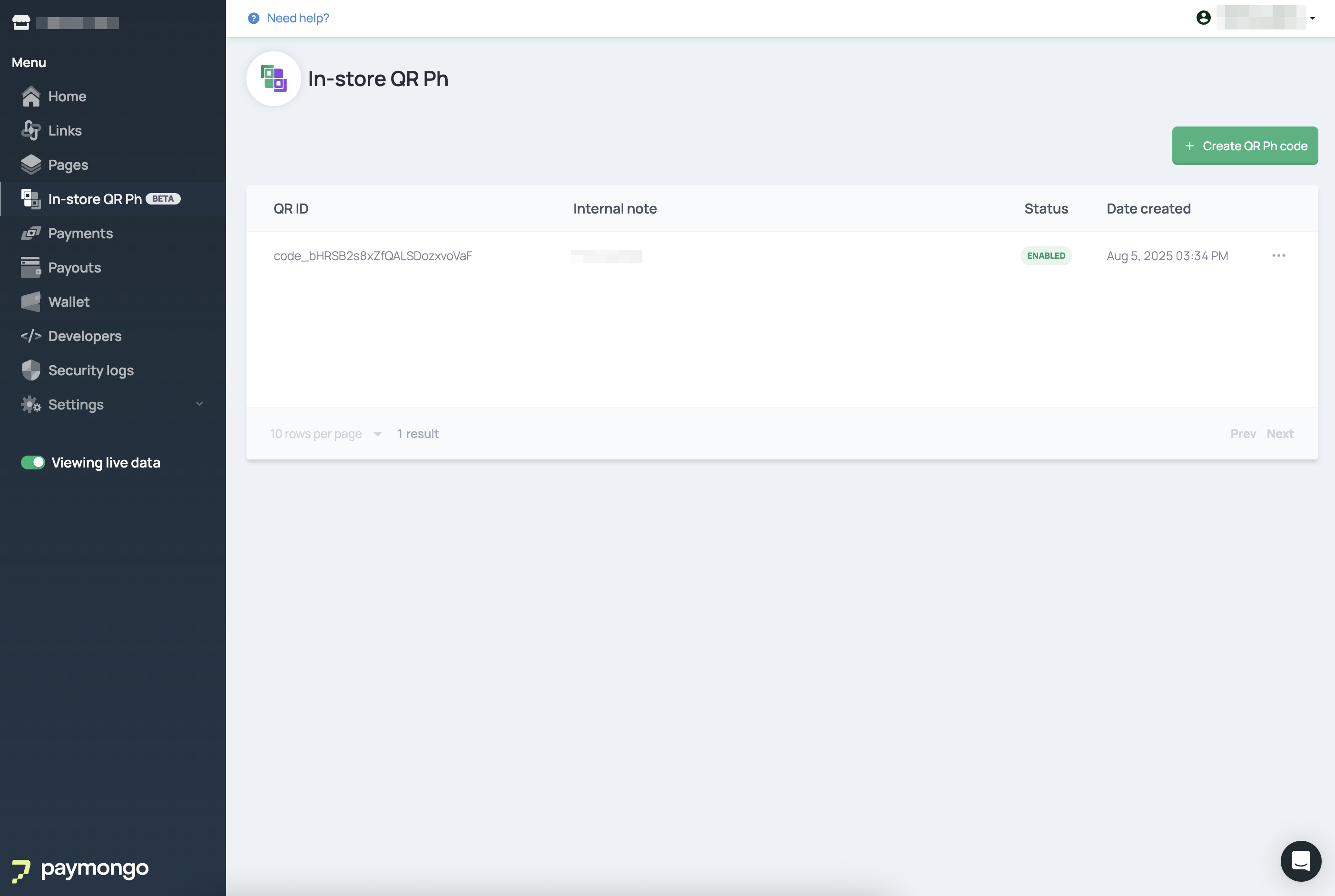
Creating an In-Store QR Ph Code
Follow these steps to generate a static QR Ph code from your dashboard:
- From the In-Store QR Ph module, click "Create QR Ph Code".
- Provide a mobile number for SMS notifications
This is crucial for receiving instant alerts about successful transactions. You can nominate a dedicated store number or a number from your accounting/operations team. - Add an internal note (optional)
This note is only visible to you on the dashboard and helps distinguish payments if you have multiple QR codes (e.g., "Cashier 1," "Main Entrance"). - After submission, you can download the QR Ph standee image directly from the QR Code Details page.
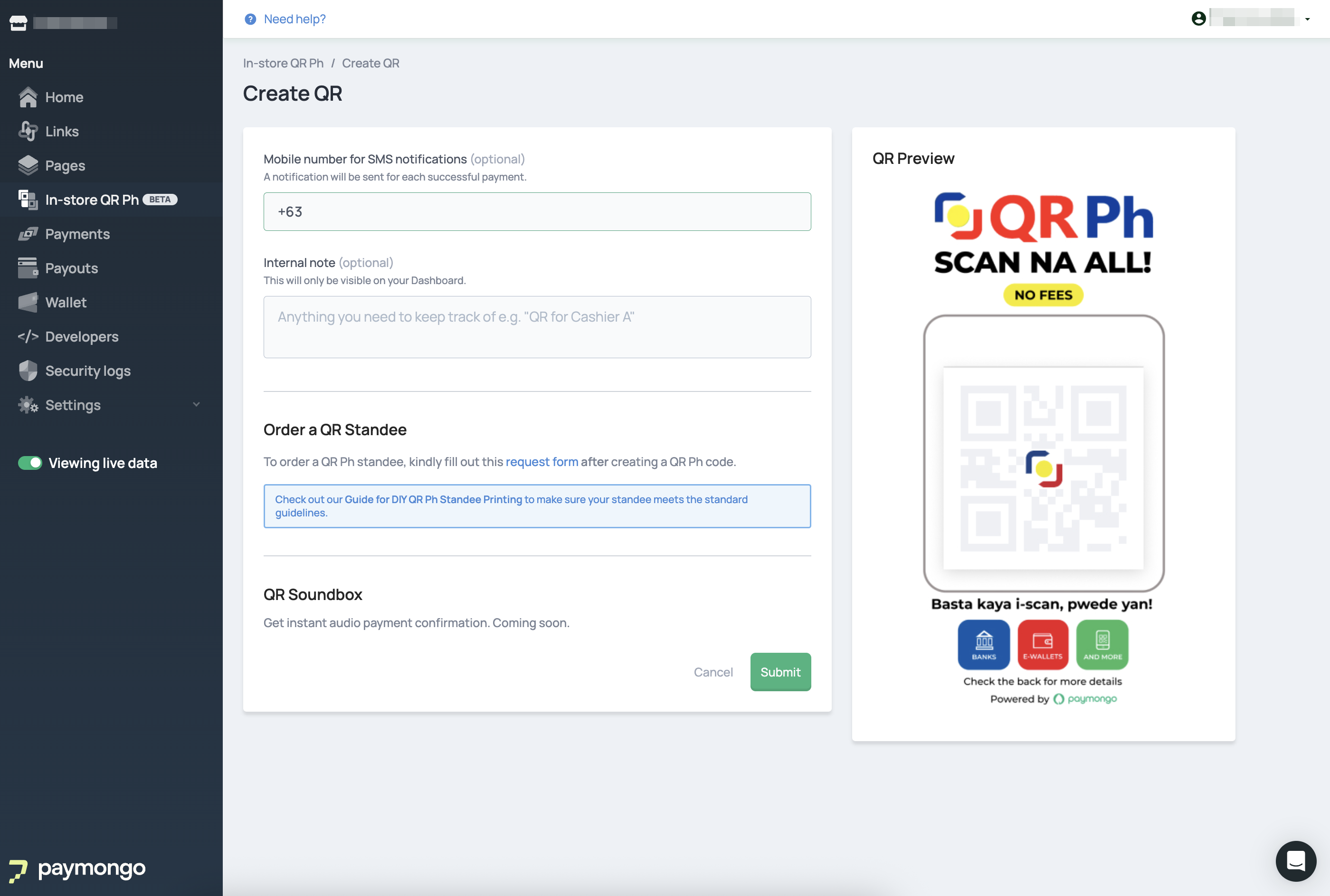
Displaying your In-Store QR Ph Code
Effectively displaying your In-store QR Ph code is essential for customer convenience and successful transactions.
Size and Color Guidelines
- Minimum QR Code Size
If printing smaller than the 5x7 inch template, the QR code itself must be at least 2.5 x 2.5 inches (approx. 6.35 x 6.35 cm) to ensure scannability. - Color & Shape
The QR Ph code should always be colored and square-shaped. Avoid stretching or distorting the code. - Testing
Always test the printed QR Ph code with various banking apps/e-wallets before displaying it.
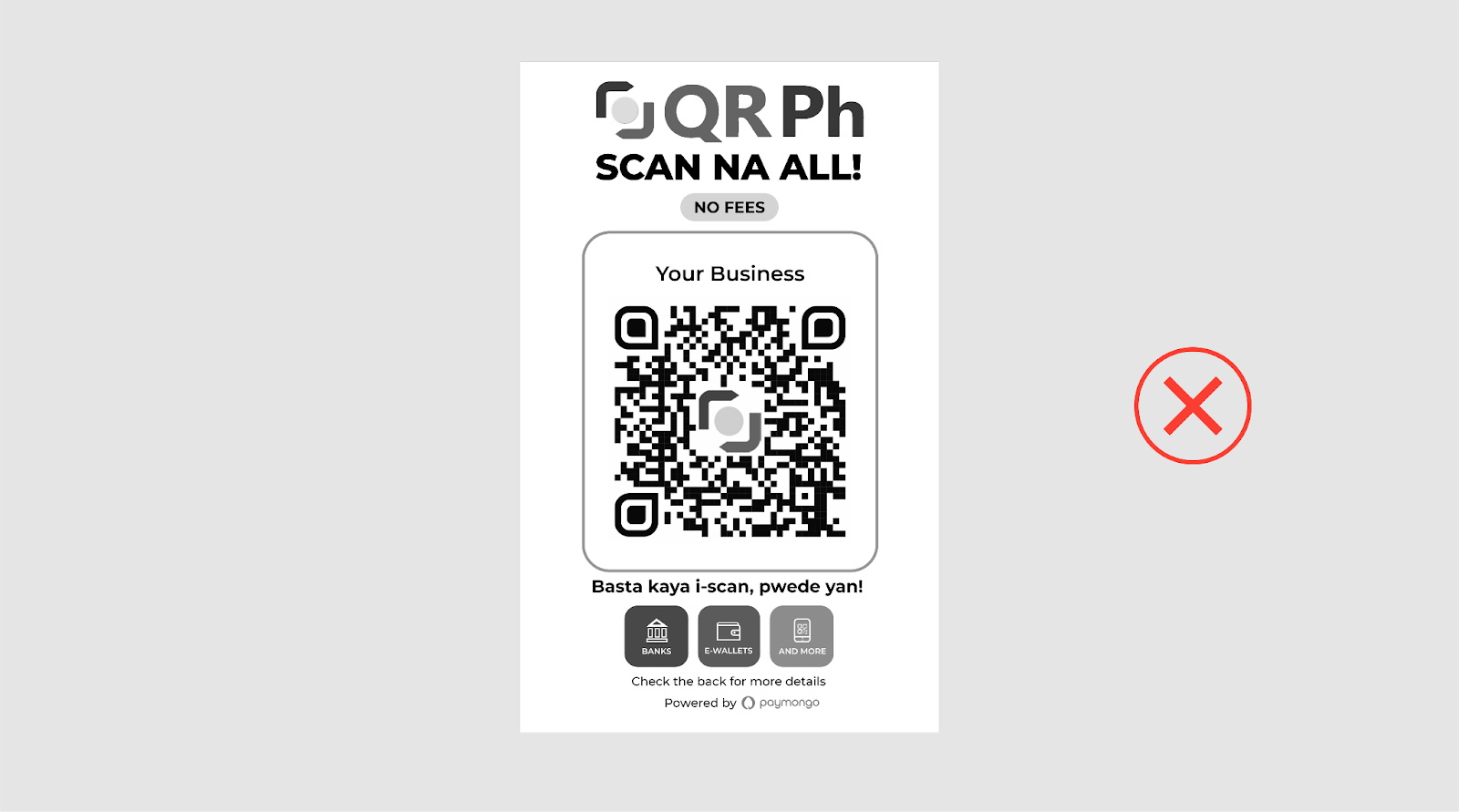
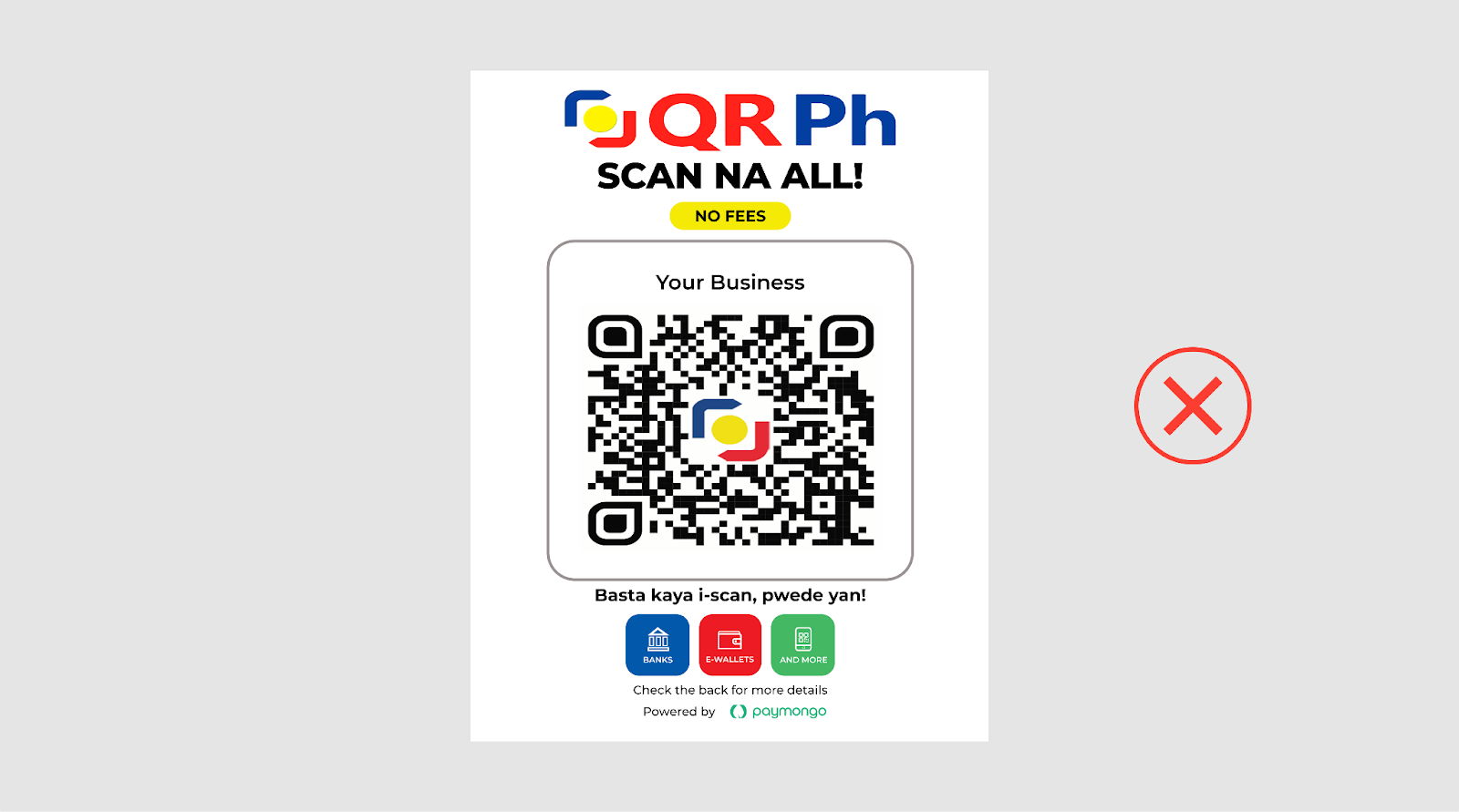
Layout Recommendations
- Clarity
Your Business's Trade Name or Store Name and the QR Ph logo must be clearly visible alongside the QR Ph code. - Logo Size
The QR Ph logo should not appear visibly smaller than other logos on your standee. - Automatic Layout
When downloaded from the PayMongo dashboard, the layout is automatically set according to Bancnet standards for QR Ph standees. Editing this layout for printed standees is not recommended as it may affect scannability and compliance.
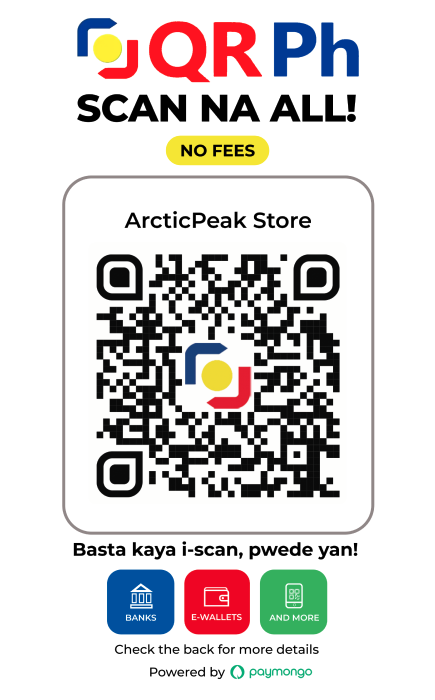
Printing Tips
- Material
Use a sintra board or acrylic display standee for durability and professional appearance. - Minimum Standee Size
Aim for a minimum standee size of 5x7 inches (12.7 x 17.8 cm). - Finish
A matte material is recommended to prevent glare from lights, which can cause scanning issues.
Ideal Display Locations and Uses
- Checkout Counter
The most common and convenient placement for quick payments during checkout. - Restaurant Tables and Bill Folds
Allows diners to conveniently scan and pay for their orders directly at their table. - Social Media & Messaging Apps
A soft copy of your QR Ph code can be sent to customers for remote payments (e.g., for online orders, reservations, or delivery services). This allows you to accept payments even without a physical interaction.
Updated 1 day ago
